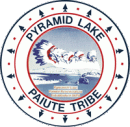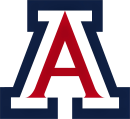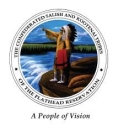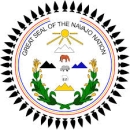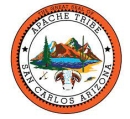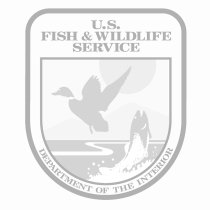Location
States
NevadaIntroduction
Climate change-induced drought is having increasingly severe impacts on the wellbeing of Native American Communities of the Intermountain West that the recent COVID-19 pandemic has exacerbated. Lower snowpack and rainfall across the Intermountain West are reducing water supplies while urban and industrial expansion is increasing demand. The Native American communities who rely upon these dwindling water resources for interwoven cultural and agricultural activities are increasingly more vulnerable to drought.
This has been especially true during the COVID-19 pandemic where Native American Communities in the U.S. have been some of the most hard hit in terms of deaths, community transmission, and economic impacts. Drought compounds the effects of the COVID-19 pandemic by reducing already limited access to water critical for sanitation, farming, and ranching. Reduced water for sanitation increases risk of community transmission and reduced water for agriculture cuts off critical sources of income necessary to recover from the economic effects of COVID-19. Coordinating distribution of resources for COVID-19 and drought relief across vast rural areas where residents have limited access to internet and cell coverage for communication has been challenging.
The Native Waters on Arid Lands project (NWAL) is working to enhance the resilience of Native American communities across the Intermountain West against climate change climate change
Climate change includes both global warming driven by human-induced emissions of greenhouse gases and the resulting large-scale shifts in weather patterns. Though there have been previous periods of climatic change, since the mid-20th century humans have had an unprecedented impact on Earth's climate system and caused change on a global scale.
Learn more about climate change -induced drought and the COVID-19 pandemic. Through NWAL, Tribal community members are supported by Tribal and non-Tribal water specialists, cultural advisors, agriculturalists, and educators. Additional project partners include research and extension faculty from the First American Land-Grant Consortium of Tribal Colleges and Universities (TCUs), Federally Recognized Tribal Extension Program (FRTEP), and academic researchers.
By increasing collaboration and communication among NWAL participants, the NWAL project supports knowledge sharing and fosters greater understanding among project partners. This increases Tribal capacity to respond to these concurrent and compounding emergencies. Key activities include undertaking collaborative research projects; hosting community workshops and annual Tribal summits; supporting education; and developing and implementing reservation-wide plans, policies, and practices to support sustainable agriculture, water management, and COVID-19 pandemic response actions.
Key Issues Addressed
Understanding the effects that climate change is having on Native American Communities of the Intermountain West and predicting future impacts on water resources is critical to drought preparation. However, understanding climate effects and predictions for these communities is hindered by the significant data gaps that reduce capacity to plan for climate impacts. Some gaps come from a lack of climate data. Others reflect the lack of synergy between Traditional Ecological Knowledge (TEK) into drought planning and preparation and the undervalued scientific contributions of Indigenous researchers.
Responding effectively to the concurrent emergencies of climate change-induced drought and the COVID-19 pandemic requires increased communication and coordination. Sharing Traditional Ecological Knowledge and western scientific knowledge to increase resilience to drought requires coordination between Tribal and non-Tribal universities, community members, Tribal governments, and scientists from federal agencies. Similarly, responding to the public health emergency caused by the COVID-19 pandemic requires a great deal of coordination to ensure access to health care and essential resources. NWAL seeks to support existing communication networks and increase capacity for sharing knowledge and resources.
Many of the programs that are in place to address the impacts of drought on agricultural producers and rural communities, as well as those that are designed to respond to the COVID-19 pandemic, do not take into consideration the unique cultural, geographical, and economic context of Native American Communities of the Intermountain West.
Responding to the concurrent crises of drought and COVID-19 requires engagement from the whole community. Without engaging youth through environmental and public health educational programs in K-12 education, a critical segment of the population is excluded from the solutions and generating long-term responses to these environmental and public health crises.
Project Goals
- Develop drought plans, policies, and practices for sustainable agriculture and water management that explicitly incorporate TEK and acknowledge cultural, as well as ecological and economic, ties to agriculture and water resources.
- Analyze past and present climate risks to agricultural production and water supply, evaluate current water infrastructure, and test alternative agriculture and water management practices to increase resilience.
- Build understanding among Tribal and non-Tribal organizations about challenges and opportunities for sustaining Tribal agriculture and cultural traditions in a changing climate.
- Respond to the emerging COVID-19 pandemic through the communication networks and relationships built over the course of the NWAL project.
Project Highlights
Indigenous Scientists: The NWAL project highlighted the contributions of Indigenous scientists to developing responses to drought through the Water in a Native World publication and the Native Voices in STEM seminar series.
- Tribal Summits: Yearly Tribal summits, from 2015-2019, brought together expertise from Indigenous nations across the Western states. This provided opportunities for inter-Tribal knowledge sharing and interactive discussions between researchers, extension specialists, Tribal members, ranchers, agriculturalists, students and others.
- Focus on Education:NWAL partners worked together to develop curriculum and teacher trainings for place-based environmental education for K-12 students and a Community of Practice to support teachers. NWAL partners also developed Water in a Warming World modules for undergraduate students and created a dual credit distance learning program between local Pyramid Lake High School and Navajo Technical University for college level courses.
- Co-Producing Knowledge: The NWAL team drew on expertise from Indigenous and non-Indigenous scientists as well as the Traditional Ecological Knowledge from Tribal experts and knowledge holders when analyzing past climate trends, understanding current climate vulnerability, and planning future responses to drought.
- Planning Together: Community members, experts, and Tribal elders from the Pyramid Lake Paiute Tribe walked through worst-case scenarios together to plan for future drought. This process included a series of over 20 interview and focus group sessions with elders and knowledge holders from the Pyramid Lake Paiute Tribe.
- Creating Knowledge Portals: The NWAL website is increasing access to information through their online document library that contains over 1000 documents, COVID-19 StoryMap and resources for navigating relief packages for Tribal members, and the NWAL Knowledge Portal that brings together information about water sources, quality and stability.
- Responding to COVID-19: A virtual working group was formed to coordinate between federal agencies with resources for COVID-19 response and Tribal partners in the fifth year of the NWAL project. This allowed for coordination with FEMA to distribute essential resources like firewood and clean water, and with Tribal health agencies to increase dissemination of public health information and access to vaccination.
Lessons Learned
Sharing and discussing knowledge generated through NWAL research projects during Tribal Summits, open community meetings, workshops, and public presentations in a participatory, accessible, and relevant manner allowed for collaborative production of appropriate and effective solutions to increase resilience to drought and respond to the COVID-19 pandemic. These discussions centered the knowledge and contributions of Indigenous partners. Tribal summits, for example, exclusively featured presentations from Indigenous partners for the first four years. Discussions about future climate predictions resulted in changes to leasing rates and ranching projections. Because of the public nature of these forums and the broad knowledge base that was engaged in them, they were able to take into account past examples of resilience and synergize traditional and historical knowledge such as lessons learned from previous climate-driven migrations by Puebloan peoples from Chaco Canyon and Mesa Verde, and engage the community in broader discussions about Tribal food sovereignty.
During these community meetings, and throughout the NWAL project, listening to the needs, values, and solutions of community members was critical to building relationships of trust and mutual understanding. This resulted in NWAL projects centering community needs and values like investing in youth through environmental education programs in K-12, college, and graduate level courses. Taking these opportunities to listen also revealed the holistic impacts of climate change on cultural, ecological, and social aspects of life in Native American Communities. For example, conversations about the impacts of climate change on seasonal snowpack prompted discussions of the impacts not only on agricultural production, but also on the timing of snow-related traditional ceremonies, and environmental conditions for wildlife.
Multi-year funding sources allowed NWAL to take the time to build trusting relationships and communication during the first years of the project that were focused on preparing for and responding to drought. These relationships and communication networks allowed the project to rapidly respond to the COVID-19 pandemic and drought conditions. Researchers from NWAL became liaisons between the communities they were working in and the federal agencies providing resources for pandemic and drought relief. These relationships enabled rapid deployment of a COVID-19 toolkit, COVID-19 in Indian Country storymap, facts about COVID-19, and access to drought and COVID-19 relief funding and resources.
Next Steps
- Expand outreach to Tribal Communities throughout the intermountain West.
- Facilitate webinars about regional climate-resilient Tribal agriculture in partnership with TCU as part of the “All Climate is Local” project in the Crown of the Continent.
- Continue to develop course materials and Faculty-to-Faculty Research Programs with Tribal Colleges and Universities.
- Continue to share results and lessons learned from NWAL by expanding online and multimedia resources as well as the online library and other publications.
Funding Partner
Resources
- Native Waters on Arid Lands Site
- Water in the Native World webinar series
- Native Waters Arid Lands publications
- Issue #163: Emerging Voices of Tribal Perspectives in Water Resources
- Fitzgerald, K. (2019). “2018 Tribal Summit Report (Draft)”. Report from 4th annual Nativa Waters on Arid Lands Tribal Summit, October 17-18 2018, Reno NV
- Water in the Native World: 169th issue of the Journal of Contemporary Water Research & Education. April 2020
- Federally Recognized Tribal Extension Program
- Tribal Colleges and Universities (TCU) First American Land-Grant Consortium (FALCON) Extension Agents
Contacts
- Maureen McCarthy, University of Nevada, Reno, Project Director, Native Water on Arid Lands: maureen.mccarthy@dri.edu
- Trent Teegerstrom, University of Arizona Tribal Extension: tteegers@ag.arizona.edu
- Staci Emm, University of Nevada, Reno Extension: emms@unr.edu
CART Lead Authors
- Amy Duong, Student Author, Northern Arizona University
- Daniel Velasco, Student Author, University of Arizona
- Ariel Léger, Research Specialist, University of Arizona, arielleger@arizona.edu
Suggested Citation
Duong, A., Léger, A., M., Velasco, D. (2022). “Resilience on Native American Lands of the Intermountain West: Native Waters on Arid Lands” CART. Retrieved from https://www.fws.gov/project/native-waters-arid-lands.




